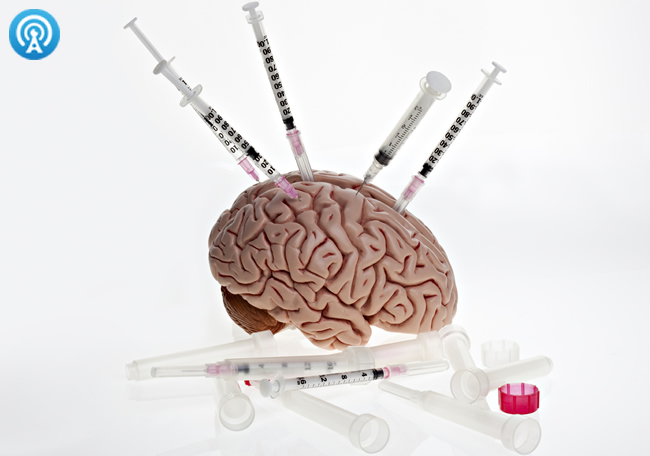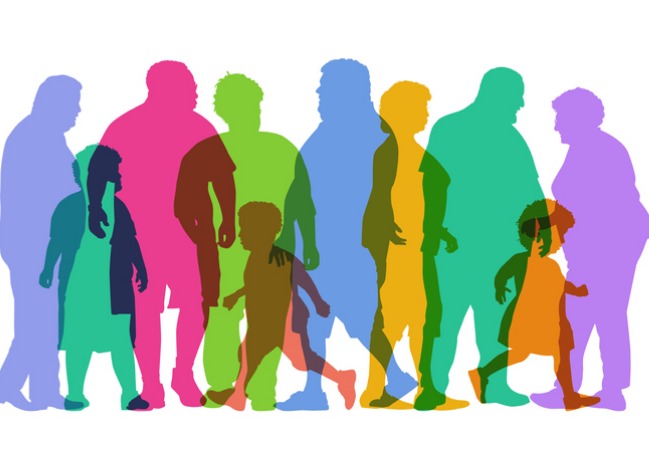El modelo cerebral de la adicción

1Results from the 2013 National Survey on Drug Use and Health: summary of national findings. Rockville, MD: Substance Abuse and Mental Health Services Administration, Center for Behavioral Health Statistics and Quality, 2013.
2The health consequences of smoking — 50 years of progress. Rockville, MD: Department of Health and Human Services, 2014.
3Excessive drinking costs U.S. $223.5 billion. April 17, 2014 (http://www.cdc.gov/features/alcoholconsumption).
4National drug threat assessment, 2011. Washington, DC: Department of Justice, National Drug Intelligence Center, 2011.
5Busch SH, Epstein AJ, Harhay MO, et al. The effects of federal parity on substance use disorder treatment. Am J Manag Care 2014;20:76-82
Web of Science | Medline
6US Senate working to cut sentences, lower prison population. Voice of America. October 1, 2015 (http://www.voanews.com/content/us-senate-working-to-cut-sentences-to-lower-prison-population/2987683.html).
7Williams T. Police leaders join call to cut prison rosters. New York Times. October 20, 2015:A1.
8Volkow ND, Koob G. Brain disease model of addiction: why is it so controversial? Lancet Psychiatry 2015;2:677-679
CrossRef
9Potenza M. Perspective: behavioural addictions matter. Nature 2015;522:S62-S62
CrossRef | Web of Science | Medline
10Koob GF, Volkow ND. Neurocircuitry of addiction. Neuropsychopharmacology 2010;35:217-238
CrossRef | Web of Science | Medline
11Di Chiara G. Nucleus accumbens shell and core dopamine: differential role in behavior and addiction. Behav Brain Res 2002;137:75-114
CrossRef | Web of Science | Medline
12Koob GF. Neural mechanisms of drug reinforcement. Ann N Y Acad Sci 1992;654:171-191
CrossRef | Web of Science | Medline
13Wise RA. Dopamine and reward: the anhedonia hypothesis 30 years on. Neurotox Res 2008;14:169-183
CrossRef | Web of Science | Medline
14Schultz W. Getting formal with dopamine and reward. Neuron 2002;36:241-263
CrossRef | Web of Science | Medline
15Kauer JA, Malenka RC. Synaptic plasticity and addiction. Nat Rev Neurosci 2007;8:844-858
CrossRef | Web of Science | Medline
16Kourrich S, Calu DJ, Bonci A. Intrinsic plasticity: an emerging player in addiction. Nat Rev Neurosci 2015;16:173-184
CrossRef | Web of Science | Medline
17Wolf ME, Ferrario CR. AMPA receptor plasticity in the nucleus accumbens after repeated exposure to cocaine. Neurosci Biobehav Rev 2010;35:185-211
CrossRef | Web of Science | Medline
18De Roo M, Klauser P, Garcia PM, Poglia L, Muller D. Spine dynamics and synapse remodeling during LTP and memory processes. Prog Brain Res 2008;169:199-207
CrossRef | Web of Science | Medline
19Volkow ND, Morales M. The brain on drugs: from reward to addiction. Cell 2015;162:712-725
CrossRef | Web of Science | Medline
20Volkow ND, Wang GJ, Telang F, et al. Cocaine cues and dopamine in dorsal striatum: mechanism of craving in cocaine addiction. J Neurosci 2006;26:6583-6588
CrossRef | Web of Science | Medline
21Weiss F. Neurobiology of craving, conditioned reward and relapse. Curr Opin Pharmacol 2005;5:9-19
CrossRef | Web of Science | Medline
22Volkow ND, Wang GJ, Fowler JS, et al. Decreased striatal dopaminergic responsiveness in detoxified cocaine-dependent subjects. Nature 1997;386:830-833
CrossRef | Web of Science | Medline
23Zhang Y, Schlussman SD, Rabkin J, Butelman ER, Ho A, Kreek MJ. Chronic escalating cocaine exposure, abstinence/withdrawal, and chronic re-exposure: effects on striatal dopamine and opioid systems in C57BL/6J mice. Neuropharmacology 2013;67:259-266
CrossRef | Web of Science | Medline
24Trifilieff P, Feng B, Urizar E, et al. Increasing dopamine D2 receptor expression in the adult nucleus accumbens enhances motivation. Mol Psychiatry 2013;18:1025-1033
CrossRef | Web of Science | Medline
25Saddoris MP, Cacciapaglia F, Wightman RM, Carelli RM. Differential dopamine release dynamics in the nucleus accumbens core and shell reveal complementary signals for error prediction and incentive motivation. J Neurosci 2015;35:11572-11582
CrossRef | Web of Science | Medline
26Wise RA. Brain reward circuitry: insights from unsensed incentives. Neuron 2002;36:229-240
CrossRef | Web of Science | Medline
27Müller CA, Geisel O, Banas R, Heinz A. Current pharmacological treatment approaches for alcohol dependence. Expert Opin Pharmacother 2014;15:471-481
CrossRef | Web of Science | Medline
28Volkow ND, Tomasi D, Wang GJ, et al. Stimulant-induced dopamine increases are markedly blunted in active cocaine abusers. Mol Psychiatry 2014;19:1037-1043
CrossRef | Web of Science | Medline
29Hägele C, Schlagenhauf F, Rapp M, et al. Dimensional psychiatry: reward dysfunction and depressive mood across psychiatric disorders. Psychopharmacology (Berl) 2015;232:331-341
CrossRef | Web of Science | Medline
30Hyatt CJ, Assaf M, Muska CE, et al. Reward-related dorsal striatal activity differences between former and current cocaine dependent individuals during an interactive competitive game. PLoS One 2012;7:e34917-e34917
CrossRef | Web of Science | Medline
31Konova AB, Moeller SJ, Tomasi D, et al. Structural and behavioral correlates of abnormal encoding of money value in the sensorimotor striatum in cocaine addiction. Eur J Neurosci 2012;36:2979-2988
CrossRef | Web of Science | Medline
32Davis M, Walker DL, Miles L, Grillon C. Phasic vs sustained fear in rats and humans: role of the extended amygdala in fear vs anxiety. Neuropsychopharmacology 2010;35:105-135
CrossRef | Web of Science | Medline
33Jennings JH, Sparta DR, Stamatakis AM, et al. Distinct extended amygdala circuits for divergent motivational states. Nature 2013;496:224-228
CrossRef | Web of Science | Medline
34Koob GF, Le Moal M. Plasticity of reward neurocircuitry and the ‘dark side’ of drug addiction. Nat Neurosci 2005;8:1442-1444
CrossRef | Web of Science | Medline
35Kaufling J, Aston-Jones G. Persistent adaptations in afferents to ventral tegmental dopamine neurons after opiate withdrawal. J Neurosci 2015;35:10290-10303
CrossRef | Web of Science | Medline
36Goldstein RZ, Volkow ND. Dysfunction of the prefrontal cortex in addiction: neuroimaging findings and clinical implications. Nat Rev Neurosci 2011;12:652-669
CrossRef | Web of Science | Medline
37Britt JP, Bonci A. Optogenetic interrogations of the neural circuits underlying addiction. Curr Opin Neurobiol 2013;23:539-545
CrossRef | Web of Science | Medline
38Demers CH, Bogdan R, Agrawal A. The genetics, neurogenetics and pharmacogenetics of addiction. Curr Behav Neurosci Rep 2014;1:33-44
CrossRef
39Volkow ND, Muenke M. The genetics of addiction. Hum Genet 2012;131:773-777
CrossRef | Web of Science | Medline
40Burnett-Zeigler I, Walton MA, Ilgen M, et al. Prevalence and correlates of mental health problems and treatment among adolescents seen in primary care. J Adolesc Health 2012;50:559-564
CrossRef | Web of Science | Medline
41Stanis JJ, Andersen SL. Reducing substance use during adolescence: a translational framework for prevention. Psychopharmacology (Berl) 2014;231:1437-1453
CrossRef | Web of Science | Medline
42Warner LA, Kessler RC, Hughes M, Anthony JC, Nelson CB. Prevalence and correlates of drug use and dependence in the United States: results from the National Comorbidity Survey. Arch Gen Psychiatry 1995;52:219-229
CrossRef | Web of Science | Medline
43Castellanos-Ryan N, Rubia K, Conrod PJ. Response inhibition and reward response bias mediate the predictive relationships between impulsivity and sensation seeking and common and unique variance in conduct disorder and substance misuse. Alcohol Clin Exp Res 2011;35:140-155
CrossRef | Web of Science | Medline
44Nees F, Tzschoppe J, Patrick CJ, et al. Determinants of early alcohol use in healthy adolescents: the differential contribution of neuroimaging and psychological factors. Neuropsychopharmacology 2012;37:986-995
CrossRef | Web of Science | Medline
45Quinn PD, Harden KP. Differential changes in impulsivity and sensation seeking and the escalation of substance use from adolescence to early adulthood. Dev Psychopathol 2013;25:223-239
CrossRef | Web of Science | Medline
46Durlak JA, Weissberg RP, Dymnicki AB, Taylor RD, Schellinger KB. The impact of enhancing students’ social and emotional learning: a meta-analysis of school-based universal interventions. Child Dev 2011;82:405-432
CrossRef | Web of Science | Medline
47Greenberg MT, Lippold MA. Promoting healthy outcomes among youth with multiple risks: innovative approaches. Annu Rev Public Health 2013;34:253-270
CrossRef | Web of Science | Medline
48Sandler I, Wolchik SA, Cruden G, et al. Overview of meta-analyses of the prevention of mental health, substance use, and conduct problems. Annu Rev Clin Psychol 2014;10:243-273
CrossRef | Web of Science | Medline
49Kiluk BD, Carroll KM. New developments in behavioral treatments for substance use disorders. Curr Psychiatry Rep 2013;15:420-420
CrossRef | Medline
50Bell J. Pharmacological maintenance treatments of opiate addiction. Br J Clin Pharmacol 2014;77:253-263
CrossRef | Web of Science | Medline
51Sullivan MA, Bisaga A, Mariani JJ, et al. Naltrexone treatment for opioid dependence: does its effectiveness depend on testing the blockade? Drug Alcohol Depend 2013;133:80-85
CrossRef | Web of Science | Medline
52Litten RZ, Ryan ML, Falk DE, Reilly M, Fertig JB, Koob GF. Heterogeneity of alcohol use disorder: understanding mechanisms to advance personalized treatment. Alcohol Clin Exp Res 2015;39:579-584
CrossRef | Web of Science | Medline
53Giedd JN, Blumenthal J, Jeffries NO, et al. Brain development during childhood and adolescence: a longitudinal MRI study. Nat Neurosci 1999;2:861-863
CrossRef | Web of Science | Medline
54DeJong W, Blanchette J. Case closed: research evidence on the positive public health impact of the age 21 minimum legal drinking age in the United States. J Stud Alcohol Drugs Suppl 2014;75:Suppl 17:108-115
CrossRef
55Report to congressional committees: mental health and substance use — employer’s insurance coverage maintained or enhanced since MHPAEA, but effect of coverage on enrollees varied. Washington, DC: Government Accountability Office, 2011.
56Bevilacqua L, Goldman D. Genes and addictions. Clin Pharmacol Ther 2009;85:359-361
CrossRef | Web of Science | Medline
57Mertens JR, Weisner C, Ray GT, Fireman B, Walsh K. Hazardous drinkers and drug users in HMO primary care: prevalence, medical conditions, and costs. Alcohol Clin Exp Res 2005;29:989-998
CrossRef | Web of Science | Medline
58Weisner C, Mertens J, Parthasarathy S, Moore C, Lu Y. Integrating primary medical care with addiction treatment: a randomized controlled trial. JAMA 2001;286:1715-1723
Comentarios
Para ver los comentarios de sus colegas o para expresar su opinión debe ingresar con su cuenta de IntraMed.










